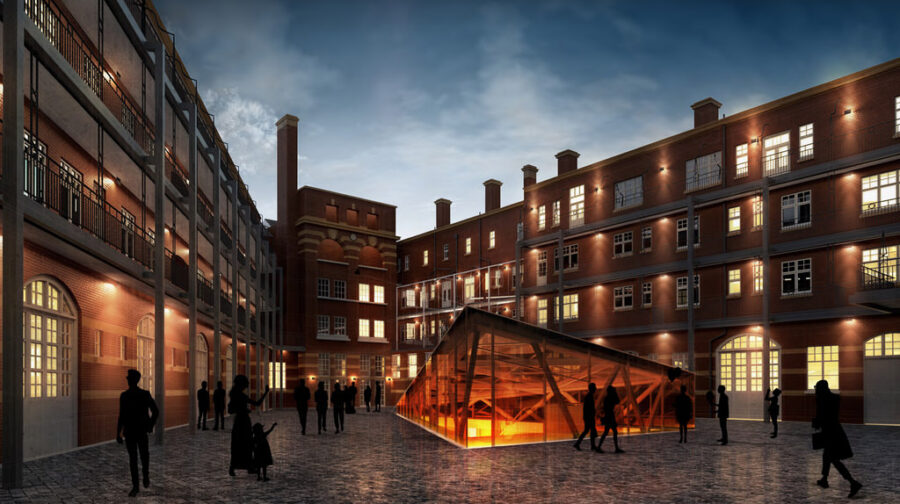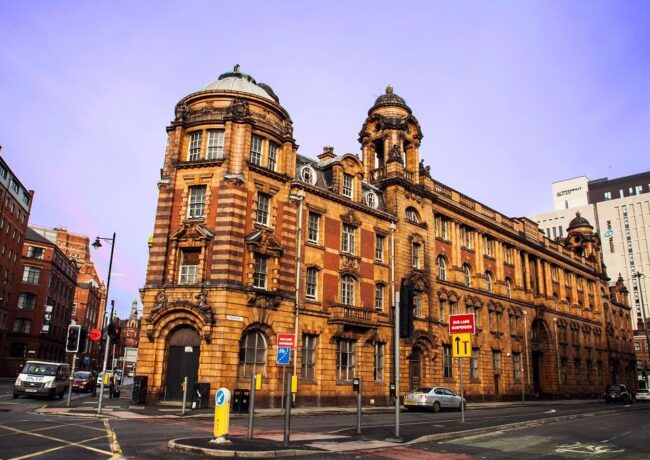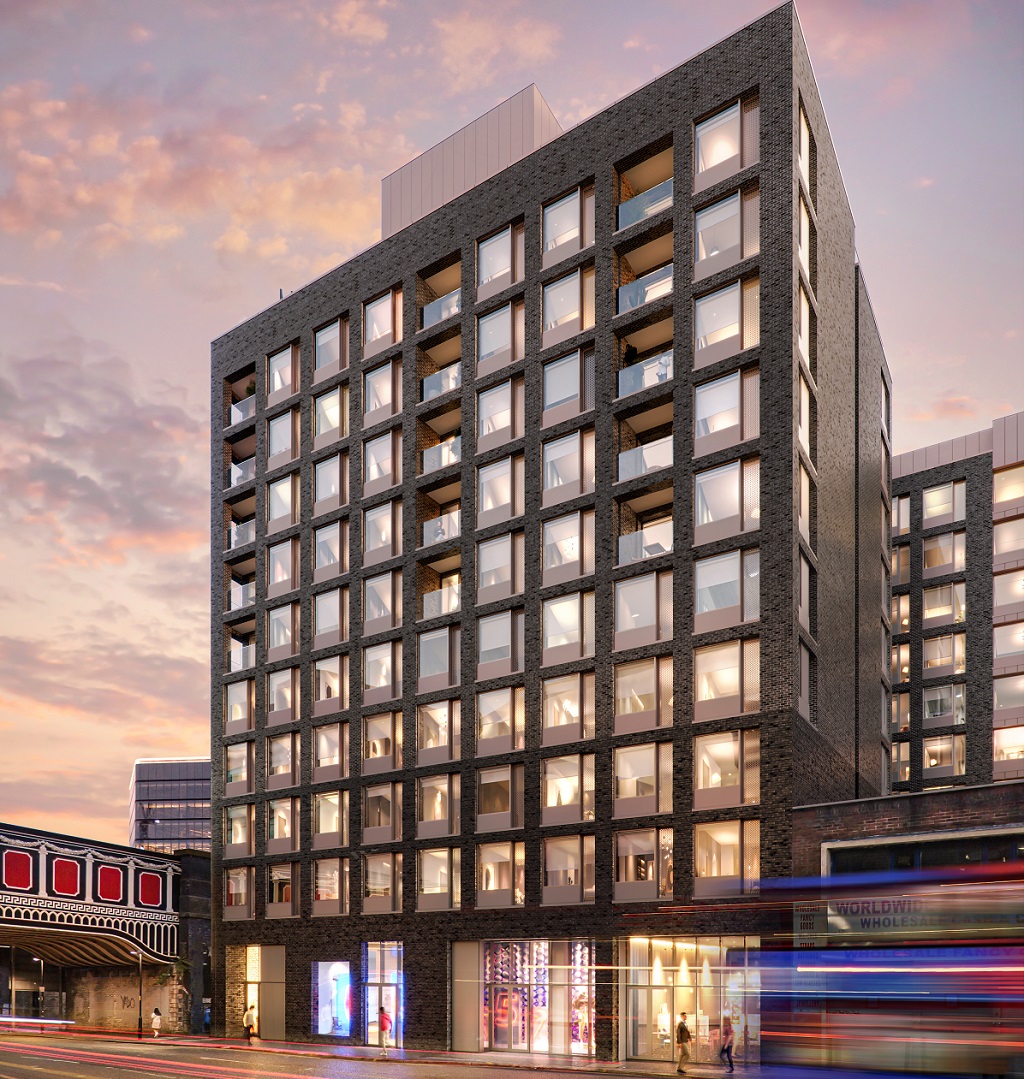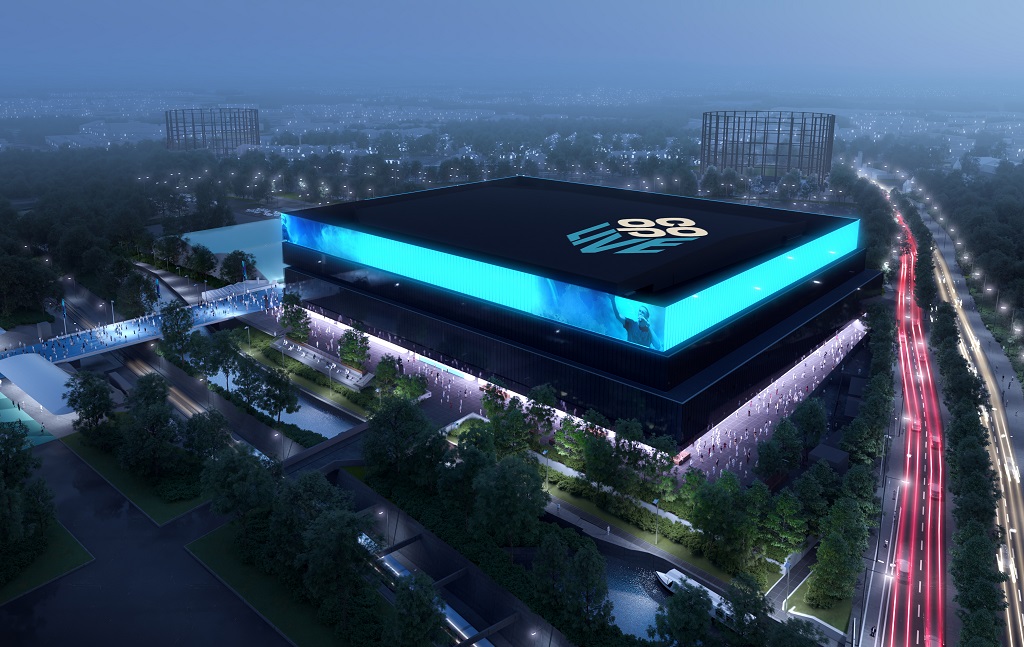Allied London starts work on London Road Fire Station
Allied London has started external works to Manchester’s grade two star-listed London Road Fire Station as it prepares the building for a major restoration and redevelopment.
The developer has appointed Watts Group as historic building management consultants to help oversee the work, alongside its in-house historic building surveyor Stephen Elllis, and Steven Levrant Historic Architecture. Allied London has also consulted with Historic England and Manchester City Council on the work.
The prolific developer first submitted plans for the redevelopment of the prominent grade two star-listed site just behind Piccadilly Station in May last year, having bought it from previous owner Britannia Hotels in 2015.
Last month, chief executive Michael Ingall confirmed plans to start on site in September, with anchor tenants now said to be in place.
Scaffolding is now being erected across London Road and Fairfield Street, and the developer said it was working with its team to ensure none of the scaffolding fixes to the building to prevent damage to its terracotta façade.
This scaffolding will allow the team to undertake a detailed external inspection of the building’s high-level areas over the coming weeks. A scope will also be established for investigations works and materials sampling, which Allied London said would “enhance the understanding of the building fabric” and allow the evaluation of proposed cleaning and repair methods at an early stage.
Ellis said: “Time has been required to understand this heritage asset, explore its values and assess its significance, before we intelligently manage any change. We’ve been carrying out detailed surveys and analysis necessary to meet both planning and listed building consent conditions.
“As well as the work being done behind the scenes, we have importantly kept the building maintained and in constant use through various filming activities, tours and events.”
A management company for the Fire Station was set up in April this year at Companies House, with Ingall listed as a director alongside Suresh Gorasia, Allied London’s chief operating officer; corporate director Jonathan Raine; and financial director Freddie Graham-Watson. Similarly, an operating company was set up in January with the same four directors.
Plans for the site, designed by architect Levitt Bernstein, include a 91-bed hotel, bars, restaurants, workspace, and 21 live-work units, with new build extensions also part of the proposals. Extensions will take the gross internal floorspace at the building from 144,400 sq ft to 172,100 sq ft.
A new hotel wing will sit in front of the existing London Road courtyard elevation, with the original façade becoming one side of a corridor connecting the two.
Zetter Hotels, which operates boutique hotels in London, was previously lined up as operator for this part of the development in 2016.
Meanwhile, in the Fairfield Street wing, the old firemen’s flats will be adapted to create workspaces and apartments, retaining original detailing where possible. A new pavilion in the central courtyard will provide access to an underground bar and event space.





Great vision and no doubt will be a huge success from a company who aren’t just bluster but actually deliver.
By BDAY
I thought this would be a great place for an art centre with the old fire engine garages being turned into small workshops.
By Nic Mccoy
Congratulations to Mike Ingall and Allied London.
LRFS is in safe hand and will be returned to it’s former glory.
By John berta
I’ve fixed comment one:
Great vision and no doubt will be a huge success from a company who (on the whole) aren’t just bluster but actually (eventually) deliver
By Anon
I lived on the fire station from 1970 to 1972, and worked there variously between 1970 and about 1984. Glad to see sympathetic refurbishment and development plans at last ! !
PS. The basement on the Fairfield Street side was always referred to simply as “McGinty’s” although I don’t know why. Any development or bar in that area ought to continue the name, such as “McGinty’s Bar” ! ! !
By Alan Garratt
I was born in the Fire Station and lived there, in flat 43, from 1934 to 1940 and then from about 1948 to 1953, first in flat 20 then in “flat” 1. Flat 1 was in fact five storeys of two rooms and was known as the lighthouse. It was originally the chief officers house. The station was a community, effectively a village in the middle of the city. My father joined the brigade in1929 and retired in 1954. I have always thought that, with a modernised lift, it would make excellent sheltered accommodation. There are spaces such as the gymnasium, where I learnt to play badminton, and the engine house that could house recreational facilities.
By Ernest Boughton
Ernest, great information, cheers.
By I Love Ernest